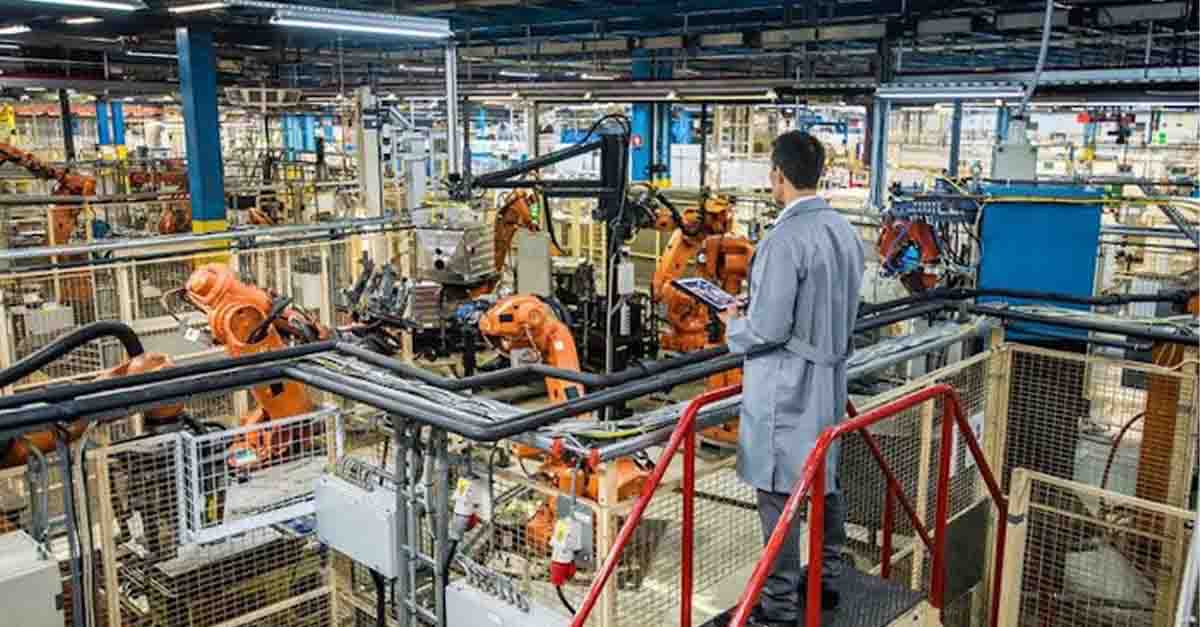
How to Draft a Comprehensive CMMS Request for Proposal (RFP)
When implementing a computerized maintenance management system (CMMS), one of the first steps is to submit an RFP to potential vendors. Here's how.
Solutions
Workplace Management Solutions
Real Estate Management Solutions
Maintenance Management Solutions
Energy Management Solutions
Engineering Document Management Solutions
Asset Management Solutions
Automate campus scheduling for classes, meetings, and exams with our EMS software.
Plan and manage conferences effortlessly with EMS software to impress guests and streamline operations.
Boost workplace flexibility and maximize space use with seamless desk and room booking.
Organize workplace or campus events smoothly, creating memorable experiences.
Optimize workspace, manage allocations efficiently, and reduce costs with our space management solutions.
Deliver projects on time and within budget by improving communication, collaboration, and efficiency with our software.
Streamline lease accounting for ASC 842, IFRS, and GASB compliance.
Manage leases efficiently by tracking key dates, analyzing costs, and ensuring compliance.
Centralize data and analytics for better insights, faster negotiations, and revenue growth.
Centralize facility and asset maintenance, automate work orders, and ensure compliance with our CMMS software.
Extend asset life, reduce downtime, and prevent costly repairs with data-driven monitoring.
Prevent equipment failures and extend asset life by detecting and addressing issues early.
Make sustainable, cost-efficient energy decisions by monitoring and optimizing power consumption.
Remotely monitor and control equipment with real-time data to predict issues, boost efficiency, and reduce downtime.
Easily share and collaborate on documents, creating a single source of truth for engineers and contractors.
Manage and analyze assets across their lifecycle to schedule maintenance, reduce downtime, and extend lifespan.
Improve visibility, automate work orders, and ensure compliance for efficient facility and asset management.
Resources
Browse our full library of resources all in one place, including webinars, whitepapers, podcast episodes, and more.
Support
Looking for access to technical support, best practices, helpful videos, or training tools? You’ve come to the right place.
About Accruent
Get the latest information on Accruent, our solutions, events, and the company at large.

If you invest in a CMMS, you don't want to see the system fail. Here's how to maximize adoption and get the most bang for your buck.
Many factors can contribute to a CMMS project’s failure, but the single most common breakdown is in user adoption. No matter how great a technology is, if those intended to use it do not, it cannot add value. Why would users not use a CMMS that is intended to help them? The primary reasons are below.
Within an organization, many individuals use a CMMS in a variety of ways depending on their role. When key roles are excluded from the CMMS evaluation and selection process, the chosen system may not fully meet the needs of every role. If this is the case, the tendency is for those users to be less willing to embrace the technology since they do not experience the benefits of the CMMS.
Figure 1 below provides an example of typical manufacturing industry CMMS users.

The features, functionality and attributes that one role values may differ greatly from those that another role prioritizes. If I am an executive, my highest priorities are likely reporting capabilities, cost information and maybe the ease of expansion to multi-site operations in the future. If I am a maintenance technician, however, I likely value ease of use, mobility and the ability to see maintenance history as key capabilities.
Because of the diversity of needs, it is important that a company’s CMMS selection process involve a cross-section of team members.
While core functionality is similar across most CMMS platforms, the ways in which vendors handle user interfaces, navigation, access levels and privileges, and many other features vary greatly. The simplicity or complexity of a CMMS can mean the difference between strong or poor adoption.
A CMMS that is not intuitive, requires extra steps, does not have a straightforward workflow, is not easily navigable, etc., runs the risk of alienating users early in the adoption process, which can have lasting effects. The inclusion of a diverse team of users in the evaluation process can help identify these platform issues early, eliminating complex tools that may not be a good fit before selection. Selection filtering is ideal because a CMMS that ranks high in ease-of-use is not only more likely to be adopted by users, but also used properly to maximize benefits.
An organization that chooses a CMMS with a high level of complexity will likely need to make a large upfront investment in well-planned user training to improve the initial CMMS experience. If this window is missed and the system is implemented without a well-trained staff, it can often be difficult to recover and increase CMMS adoption rates after initial roll out.
Many CMMS projects do not fail because of technology or product limitations, but because of poor implementation practices. One common failure is in how the solution is implemented. For example, every field in the CMMS could be enabled even when not all fields are necessary, causing confusion or missteps. Users can become overwhelmed by the amount of effort a specific activity takes. Flexible software that offers a company the ability to select and show only the fields they need can be advantageous. Other fields can be added later but simplifying the initial implementation can increase user adoption.
A CMMS implementation should be supported by the professional services team from the vendor or a third-party provider. Regardless of how easy a software may be to implement, there are best practices that professional services teams have learned that can be invaluable to an organization. If a vendor fails to offer professional services as part of their upfront pricing, it should be a red flag. Getting the CMMS project successfully off the ground is essential and well worth the investment in professional services.
Some organizations choose to invest in having a vendor’s professional service team handle the CMMS implementation, but then do not support the implementation with their own resources. Maintenance departments should be heavily involved in how CMMS software is configured, while working with professional services. Each company has unique workflow considerations and other factors that influence how best to implement their CMMS. This input is critical to a successful project.
Though choosing the right CMMS is essential, investing time and money in the implementation is equally important to overall success.
A CMMS changes the way a maintenance department operates. For companies migrating to a CMMS from a paper-based system or spreadsheets, introducing new technology may not be comfortable for many employees. As technology has become prevalent in most phases of our lives, the issue of buy-in has become less of an issue, but it still can impact CMMS success.
Workers who have spent thirty years performing maintenance tasks in one way, may be challenged with the introduction of software as a critical tool in their work process. From closing work orders to calling up reference documents, maintenance technicians typically have an entirely new user experience with a CMMS.
There are two main ways to avoid a CMMS project being negatively impacted by resistance to technology utilization. First, companies should involve workers in the CMMS evaluation and selection process. Being involved in the front-end CMMS selection gives workers a chance to get familiar with the software and understand the benefits. Second, organizations should invest in training. A clear and comprehensive training plan is essential.
It is typical for some employees to eagerly embrace technology while others are resistant to it. Educating team members on the value and benefits of a CMMS, which are clearly documented, is a valuable exercise. The more workers are exposed to the CMMS early in the selection and implementation process, the more comfortable they will become with the new tools, increasing the probability of strong adoption.
Find out how SSAB improved user adoption and managed a successful CMMS implementation. Still not convinced? Read about Alaska Airlines, L'Oreal, The New York Times or the City of Orlando, Florida. Are you ready to see your name among these internationally recognized titans? Schedule a demo today!
When implementing a computerized maintenance management system (CMMS), one of the first steps is to submit an RFP to potential vendors. Here's how.
Here are seven key questions to ask to make sure that you're choosing the right CMMS for your team and your business.
When choosing a CMMS, it's important to know what costs you can expect and what implementation you can afford. Here's what you need to know.
Subscribe to stay up to date with our latest news, resources and best practices.
* To unsubscribe at any time, please use the “Unsubscribe” link included in the footer of our emails.